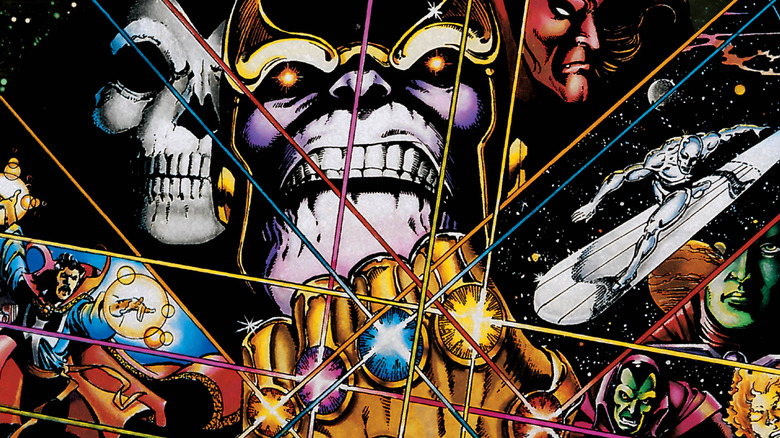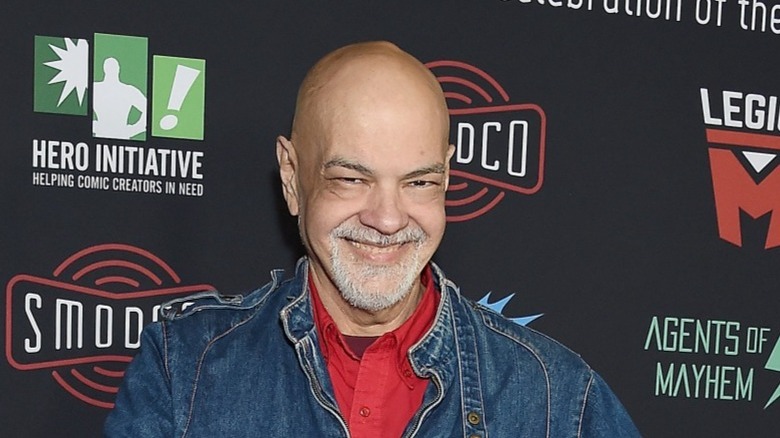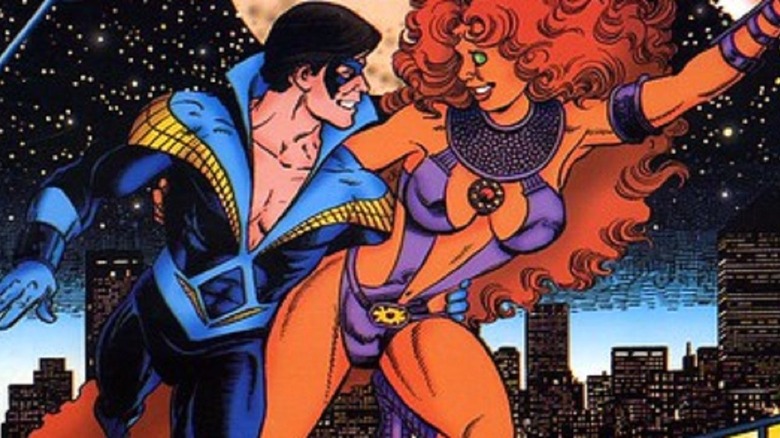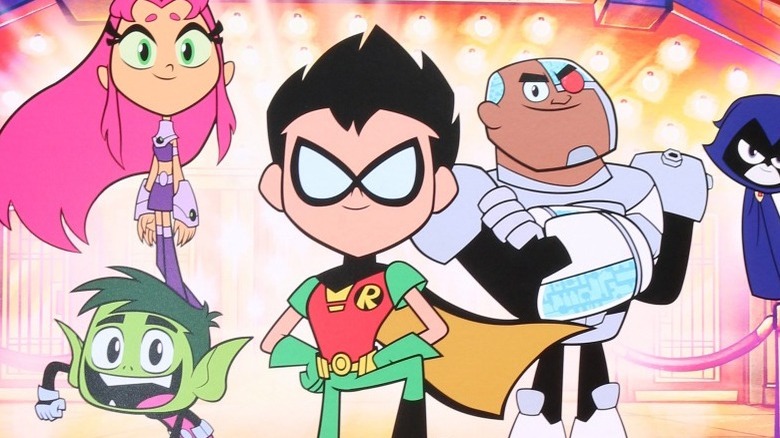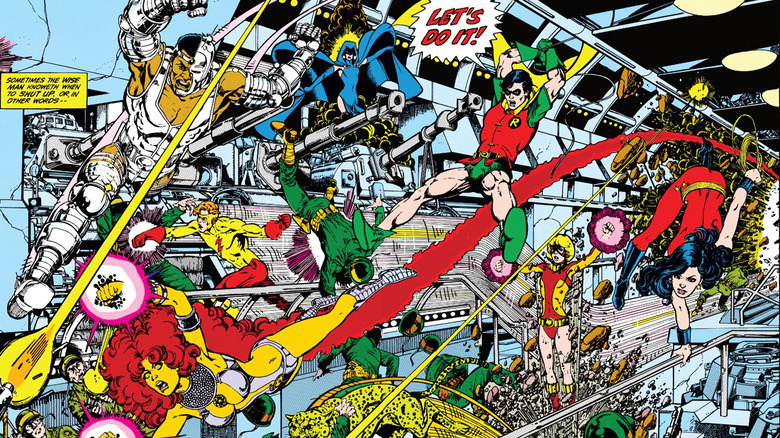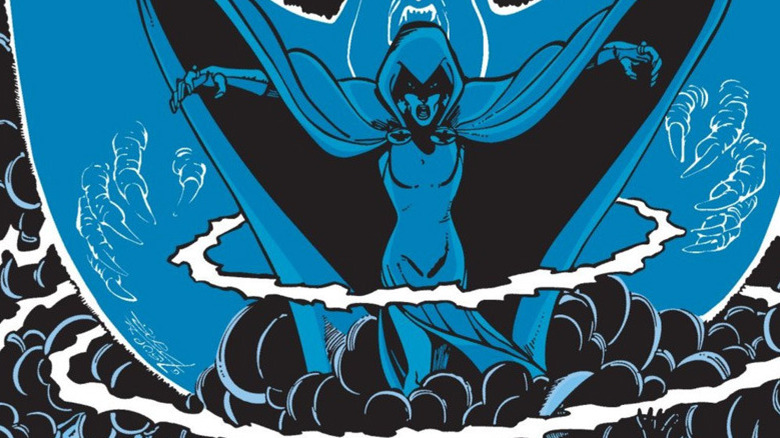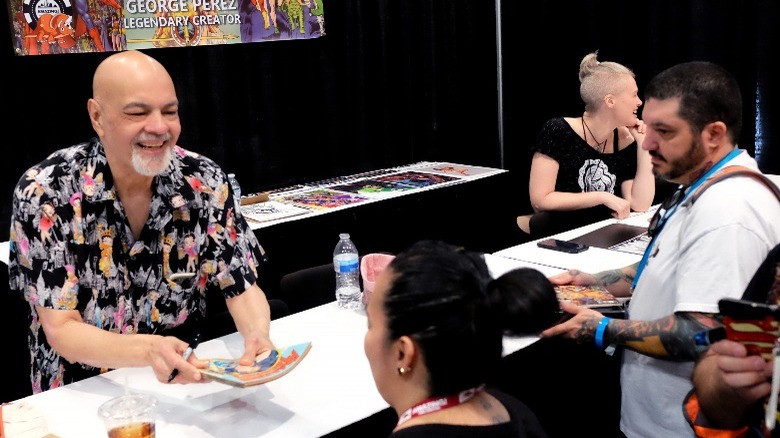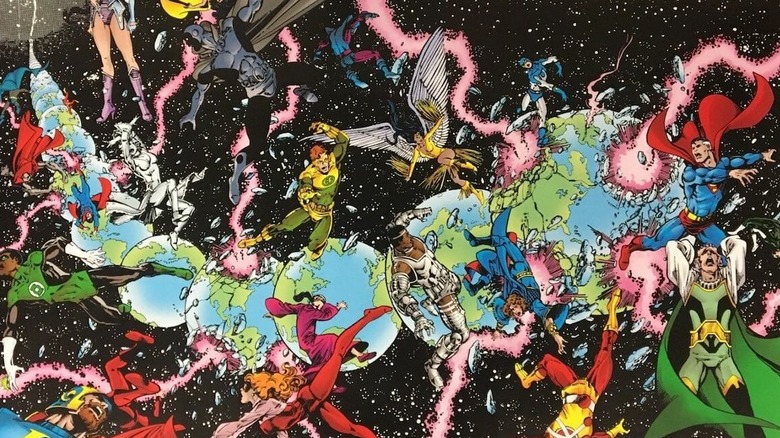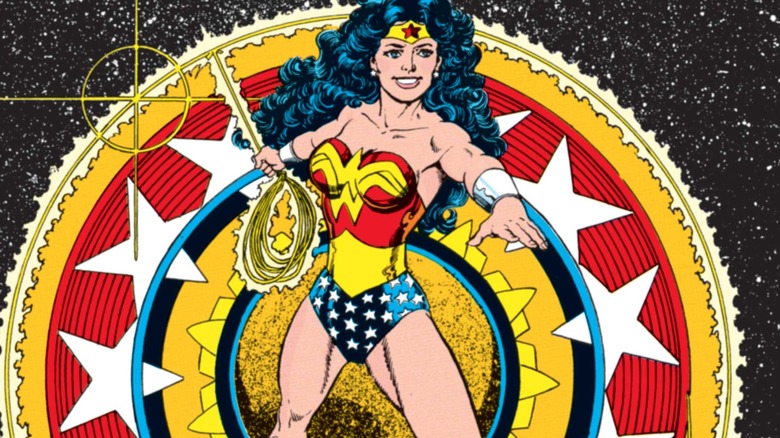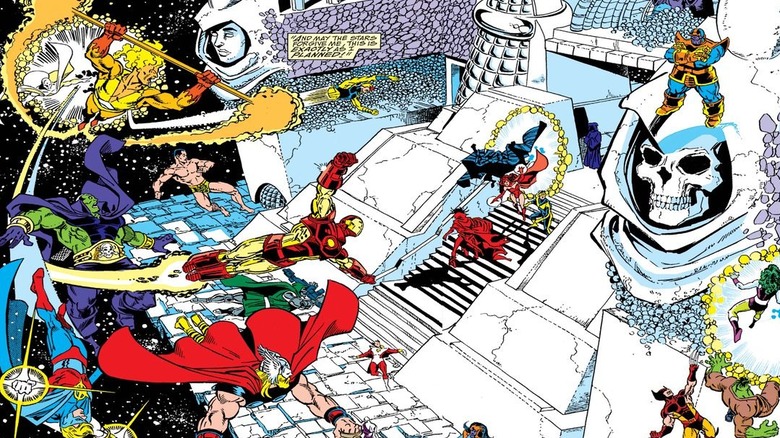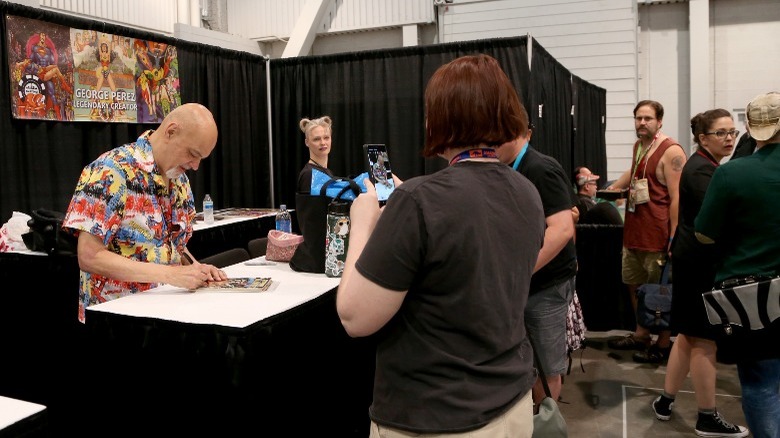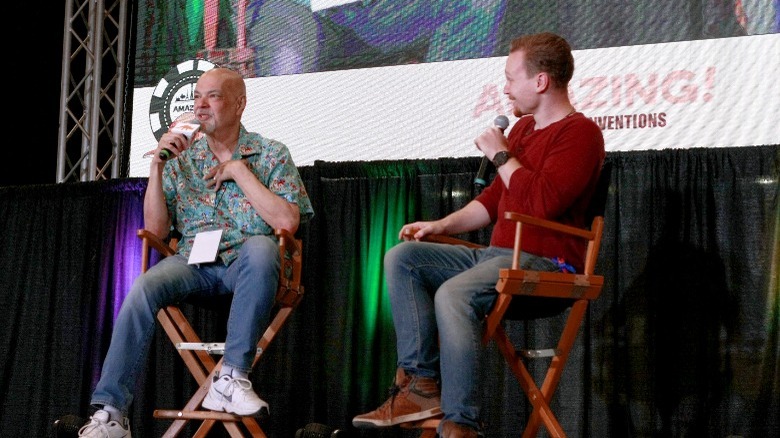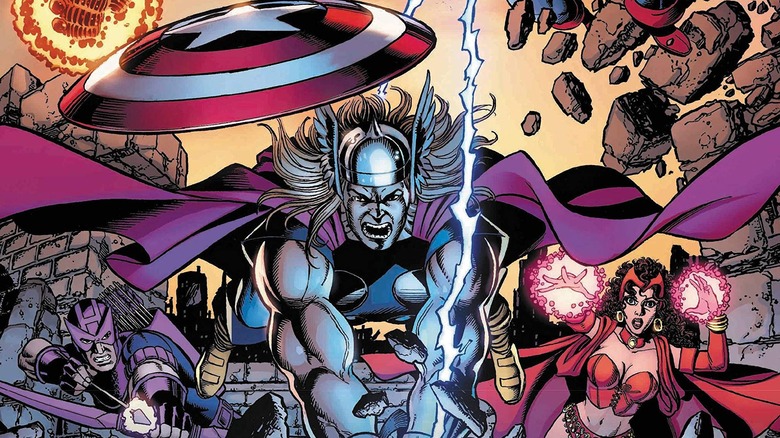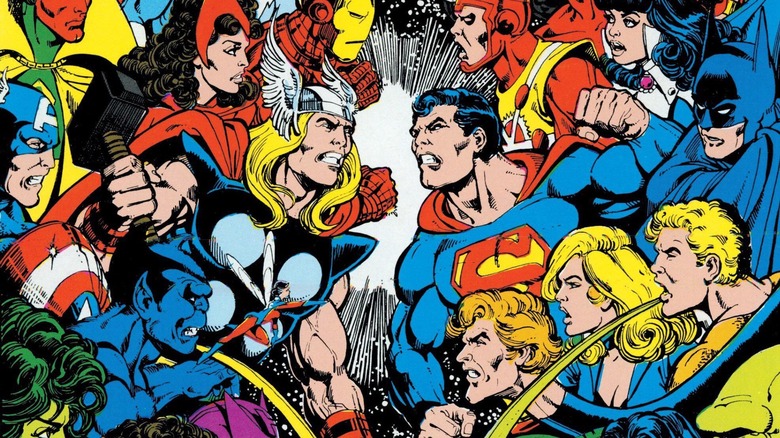How George Pérez Changed Comic Books Forever
We may receive a commission on purchases made from links.
On December 7, 2021, George Pérez announced that after being diagnosed with pancreatic cancer he would not pursue treatment, leaving him with only six to 12 months of life. The comic book community — from creative professionals to those in retail and lifelong fans — was deeply saddened by this news. While most lives coming to an end fills survivors with melancholy, Pérez's announcement hit many particularly hard.
In an industry filled with great writers and artists, Pérez's nearly 50 years of work has allowed him to create and revitalize characters, to destroy universes and rebuild worlds, and even to bridge competing companies. His artwork alone enabled characters to become individuals and filled scenes with life. Outside of creative endeavors, Pérez also worked to improve the lives of fellow creators and worked with various charities.
Basically, Pérez is not just an incredible creative talent, he has also time and time again shown himself to be an incredible human. While there are many pages left to turn before his story ends, let's take a moment to highlight Pérez's legacy.
A self-taught artist
In an era in which many people assume they have to go to college or trade school to make it in the comic book industry (or any industry they dream of entering), George Pérez is a reminder that one can become a world class talent through self-teaching and apprenticeship.
According to Pérez, he began drawing at the age of five but wasn't addicted to comics until he attended a comic book convention in high school. Instead of taking formal classes, Pérez worked on his art on his own and would then show samples to professionals at shows. As he tells it, their criticisms left him with figurative blisters on his back. As Chris Fluit wrote in 2009, Pérez showed his work "to several editors and companies and received some fairly harsh criticism."
"Marv Wolfman, then an editor at Marvel, said that he didn't know anatomy or perspective. Neal Adams, the head of Continuity Studios, told him to quit inking his own work because he obviously didn't know how," Fluit continued. "Pérez went home with the expressed purpose of proving his critics wrong. He could draw anatomy. He did know how to ink. But by trying to prove them wrong, he ended up proving them right. His anatomy, perspective, inking, everything improved as he worked harder on his craft."
Ultimately, Pérez's abilities improved so much that when Rich Buckler (a Marvel Comics artist in the early 1970s) needed help, he offered Pérez an assistant position.
He allowed sidekicks to evolve
Dick Grayson is not only one of the first sidekicks in comic books, but as one of the earliest, he's also among the longest-running comics characters. As Bradford W. Wright explained in "Comic Book Nation: The Transformation of Youth Culture," Batman's "brooding series lightened a bit in 1940 with the addition of a teenage sidekick named Robin, a character with whom young readers could supposedly identify."
Though Grayson as Robin proved popular at first, his presence became an issue writers had to dance around. As Robin, Grayson had a greater presence in the Teen Titans team and had aged up to become a real leader. Also, in 1983 DC gave Batman a new Robin, Jason Todd. Instead of killing off or retiring Grayson, Pérez — with Marv Wolfman — allowed the character to evolve into his own. This occurred in "Tales of the Teen Titans" #44, a story that finds Grayson in a new uniform and identifying himself as Nightwing.
Reflecting on the decision to change Grayson to Nightwing, Marv Wolfman talked about what motivated him and Pérez. In an interview with 13thDimension.com, Wolfman recalled, "We had aged him, we had made him a real leader, we had done a whole bunch of things with him, and I didn't want to give up Dick Grayson. And it suddenly struck me — I don't even know what happened because it was unprecedented in comics — I said, "Why don't I keep Dick Grayson and you create a new Robin and make that a big to-do in 'Batman' ... while we have Nightwing."
Shifting Grayson from Robin to the new identity of Nightwing created the framework for sidekicks in comic books to surpass the superhero they were designed to support.
Made team books the go-to
In 2019, George Pérez started his farewell tour of comic-cons before he retired. While at Amazing Con Las Vegas, Pérez was interviewed for Collider and shared an incredible insight into how creators in the 1980s approached team books — specifically, most artists didn't like them.
"I enjoy team books and at the time, particularly in the days when they didn't offer you a royalty, you got the same page rate for drawing a book that had a single lead character as you would to get a book that had a dozen characters," Pérez said. "I wanted to draw a dozen lead characters, so I became valuable to the industry because I did the books that no artists wanted to do."
His success not only made him a valuable creator in the industry, his talent elevated team books. His work on "Teen Titans" and other group books showed publishers that a team book was not just a singular brand, but an incubator for characters to become leads of their own titles.
"Now, of course, every artist wants the team books," Pérez pointed out. "That's where the money is."
Established that people on teams should look different from one another
There are a multitude of reasons why team books became popular during George Pérez's run on "The New Teen Titans." One of the most substantial is that Pérez made sure that each character was distinct — not just visually, but also in regards to personality.
Returning to Pérez being interviewed at the 2019 Amazing Con Las Vegas, he discussed how the solitude of his work inspired him to keep his social skills healthy by imagining each character as a distinct person capable of interacting with him. In turn, this inspired him to make sure each person had a unique look.
"When you draw, you tend to be alone in a studio. So I credit doing team books for keeping my social skills intact because I didn't treat the characters as just costumes or as just puppets that move around," Pérez told the audience. "I try to imagine what they were like inside those costumes. Which is why I try to draw faces individually, so that they are individual characters — I have to pay attention to their body language, to the way they look at each other."
Not only did this approach make for great storytelling, but Pérez also joked that it reminded him how to interact with people in real life.
Diversity of female body types
The comic book industry has a history of reducing female characters to a few body types that are typically overly sexualized; this was especially prominent in the 1980s and 1990s. However, Pérez showed women could be depicted in various ways to highlight beauty without reducing them to cheesecake.
As Pérez told Syfy Wire in 2017, Wonder Woman comes from "an island of Amazon, and they're supposed to all be paragons of beauty, but they also look like different women. So you have to find different interpretations of what beauty is."
Pérez went on to explain the importance of depicting Wonder Woman (and other female characters) as "a paragon of feminine beauty" without making her "a sexist paragon." His approach wasn't limited to Wonder Woman and other Amazons. Other characters he created, such as Starfire and Raven, were based on fairly different women. As Pérez shared in a 1987 interview, Starfire was modeled off Marilyn Monroe while Raven was based on "Persis Khambatta, [an Indian] actress who played in the first 'Star Trek' film."
Overall, Pérez's depictions of women reflect that it has always been possible to represent a variety of female forms that still fit within the expectations of superhero comics.
Positive relationship with fans
A creator's relationship with their fans can be complicated. While fans might build a parasocial attachment to a celebrity, that person might just see them as generic consumers. Moreover, some creators take such ownership of their work that they don't like to see fans reinterpret a character in their own art or cosplay. Pérez, however, is known for appreciating his fans.
For instance, Pérez is on record praising the Starfire cosplay work of Cheyenne Wise — so much so that he contacted her so he could meet Wise at a comic-con and take a photo with her. This isn't a one-time incident; Pérez loves to see fans celebrate his work.
"I am so in love with the idea that you fans honor me," Pérez shared. "You don't know how much you honor me and my profession when you are standing in line, when you're going through the trouble of looking at designs to make them your own."
Pérez is particularly touched by seeing fans cosplay as his character to do charitable work. He even credits cosplay and similar fan projects as re-sparking his love for comics again.
Crisis on Infinite Earths
While it wasn't the first crossover comics event, 1985's "Crisis on Infinite Earths" raised the bar. In retrospect, it's amazing to assume that no one at DC knew if this story and its corporate goals would be a success. But Pérez, not knowing if he'd get a chance to work on a story as epic as this again and wanting to have as much fun as possible, he jumped at the opportunity.
In an interview with Mike Avila of Syfy Wire, Pérez shared that while he wasn't the original choice to be the artist, the moment he made it clear he wanted the project, he got it. Of the many reasons he wanted to work on "Crisis on Infinite Earths," Pérez shared that being able to "draw everybody" would be an "absolute joy." And Pérez jammed as many characters into it as possible. Years later he would speak with pride that he finally had the chance to draw the Metal Men and several obscure DC characters.
Contributing so many characters to this series set an incredibly high visual standard. "Crisis on Infinite Earths" is a comics event that all future events have been compared to, and part of that is due to Pérez's spectacular art.
Revitalized and redefined Wonder Woman
Wonder Woman is so well-known and beloved by so many fans that it's difficult to imagine a time in which the character was at an incredible low point. In the late 1960s Diane Prince was stripped of her powers and battled crime with only Tae Kwon Do skills to aid her. And even with the popularity of Lynda Carter's "Wonder Woman" on CBS helping to revitalize the character and bring back her powers, her popularity continued to decline.
Until Pérez pitched a new vision for her.
Instead of leaning into the gritty and violent themes taking over the comic book industry at the time, Pérez used "Crisis on Infinite Earths" to relaunch "Wonder Woman" as a fantasy-fueled series in which Diana Prince fought various mythological gods and monsters. This approach not only injected new life into the Wonder Woman franchise, but it allowed Pérez to expand from being just an artist to also becoming a writer — he was soon scripting his "Wonder Woman" title.
Marvel's Infinity Gauntlet
After the success of "Crisis on Infinite Earths," Marvel Comics wanted their own massive universe-spanning event. With that goal in mind, they hired George Pérez for the crossover saga that would become 1991's "Infinity Gauntlet."
Teaming up with Jim Starlin, Pérez initially felt confined by the few characters Starlin included in his scripts. However, as documented in "George Pérez: Storyteller" by Christopher Lawrence, "Pérez asked Starlin to up the character count, citing a desire to make his return to Marvel something that would 'knock fans' socks off.'"
Though Pérez had to leave the series before it ended, his influence helped give the narrative a sense of scale few artists could accomplish. Moreover, his work on Marvel's "Infinity Gauntlet" not only impacted the comics, but laid the foundation for Phase One of the Marvel Cinematic Universe: As the artist on the series, Pérez was the one who drew Thanos erasing half of all life with a snap.
An emphasis on charity
Constance Eza took to a stage years ago to introduce George Pérez to the audience. Eza, in addition to being his friend, also helps him out at cons and assists him when communicating with his fanbase; as such, she knows that Pérez is deeply proud of the work he has done for various charities.
"If you had created Starfire and Nightwing, and if you had drawn these iconic characters," Eza said to those in attendance, "and had this storied career of fame and accolades, you might think that might make you pretty proud ... but if you ask that man what makes him the most proud and what gives him the most joy, he will tell you that in the past year he has raised money for over 23 charities."
In addition to charities like Autism Speaks, St. Jude, and the Shriners Children's Hospital, Pérez has raised over $100,000 for organizations that help people in need.
The Hero Initiative
When discussing George Pérez's legacy, it's impossible to leave out the charity he co-founded, the Hero Initiative.
Pérez not only tells stories with heroes and not only raises money for charities, he's committed to helping comics creators in need. This commitment led to his status as a founding member of the Hero Initiative, an organization dedicated to financially helping comics creators who've been left behind due to lopsided contracts.
As Chris Arrant wrote for GamesRadar.com, "As a co-founder of the nonprofit Hero Initiative that benefits comic creators in need, Pérez regularly draws sketches to be sold and/or auctioned to raise money. For a time, he was the charity's biggest fundraiser and continued to draw for the Hero Initiative and other charities even after failing eyesight forced him to retire from comics in 2019."
Though the Hero Initiative may not be as well known as Nightwing or Wonder Woman, a major part of Pérez's legacy includes acts of real-life heroism.
Reminded Marvel that the Avengers mattered
George Pérez's first big project was working on Marvel's "Avengers" comics in the early 1970s, which came full circle when he returned to the title in the late 1990s. By the time Pérez and Kurt Busiek teamed up on "The Avengers" in 1998, the series wasn't in a good place. Marvel's sales were not only dominated by the X-Men and Spider-Man, but sales for "The Avengers" were so low that Marvel temporarily outsourced the series to Jim Lee and Rob Liefeld at Image Comics as part of a publishing experiment that failed. In short, the Avengers (and its related characters) were seen as C-listers.
Running from 1998 to 2004, the third "Avengers" volume found Pérez and Busiek balancing a love for canon while making the characters relevant to modern readers. Their "Red Zone" arc used the Red Skull to comment on bigotry in the United States, but it wasn't all real-world analogues: The first three issues of this volume put the Avengers in a magical dimension. Of even greater relevance, Pérez and Busiek settled on Captain America, Hawkeye, Iron Man, Scarlet Witch, Thor, Vision, and Warbird (aka Carol Danvers aka Captain Marvel) for their Avengers roster. If those names seem familiar, it's because all of them appeared in the MCU's first phase.
Bridged comics universes
Inter-company crossovers weren't new when George Pérez had the vision to create a DC/Marvel series in 1978. However, Pérez's ambitious aim of using the Avengers and the Justice League — both with their most popular characters — in a single story raised the bar for all crossovers that followed.
Reflecting on "JLA/Avengers" to 13thDimension.com, Pérez described the initial experience as positive, recalling his enthusiasm for "playing in the playground of two companies." Unfortunately, it wouldn't last.
"Everyone knows it was started back in the 1980s and because of a lot of intercompany politics, it was killed. And I was really upset about that, having drawn 21 pages, having the time of my life, and then having it yanked out from under me," Pérez recalled. "(Then) it had a lot of false starts to restart it, and nothing ever happened."
Luckily for Pérez and fans, Marvel and DC finally came to an agreement in the early 2000s, partnering Pérez with Busiek to tell another universe-spanning story that enabled Pérez to draw a multitude of characters. Though DC and Marvel haven't published a joint book like this since then, there' always the chance that Pérez's legacy will inspire them to come together again.
